Written by and Photos by Luke Phillips. Posted in Rides
If there was ever a place to ride that sounded so wild, so beautiful, so outrageous that you find yourself feeling that it must be fictitious―that place could only be Namibia. It’s a country so remarkable and diverse that it takes the crown as not only one of the best motorcycle destinations in Africa, but possibly in the entire world.
Before I arrived in Namibia, I’d heard a lot about it from friends, colleagues, and locals I’d met en route through the African continent. The conversations always went the same way: “Oh you’re heading south, make sure you leave enough time for Namibia. You’ll be blown away!” It was intriguing, especially considering most of these conversations took place over 2,000 miles and several countries away from Namibia. What made this place so special? Why were so many suggesting I hightail it across a continent to make certain I spent the lion’s share of my trip in one country? There was only one way to find out.
Upon crossing the border from Botswana, there’s an immediate change in the air. The world’s second most sparsely-populated country is intersected by huge, well-maintained highways, which conveniently cut the country into several large sections and connect the major cities of Windhoek and Swakopmund. While well-maintained roads are seldom on a list of adventure riders’ demands, these highways make it easy to head into the wilderness for adventure. The road system is like a pipeline taking you from a resupply point in the city to the real treasures of Namibia.
Overlooking Namib’s valley of a thousand hills.
Arriving in Windhoek, I was immediately surprised by the capital city’s cleanliness and modernity. As a rider who often has little interest in big cities and concrete structures, even I had to admit it was an interesting place. A modern metropolis in the middle of a desert, it’s superbly structured and complete with a plethora of motorcycle shops and beer gardens pretty much everywhere you look. It was a welcome pit stop after months in the wilderness of Africa. Along with the coastal town of Swakopmund, it would become a unique starting point for a series of incredible adventures.
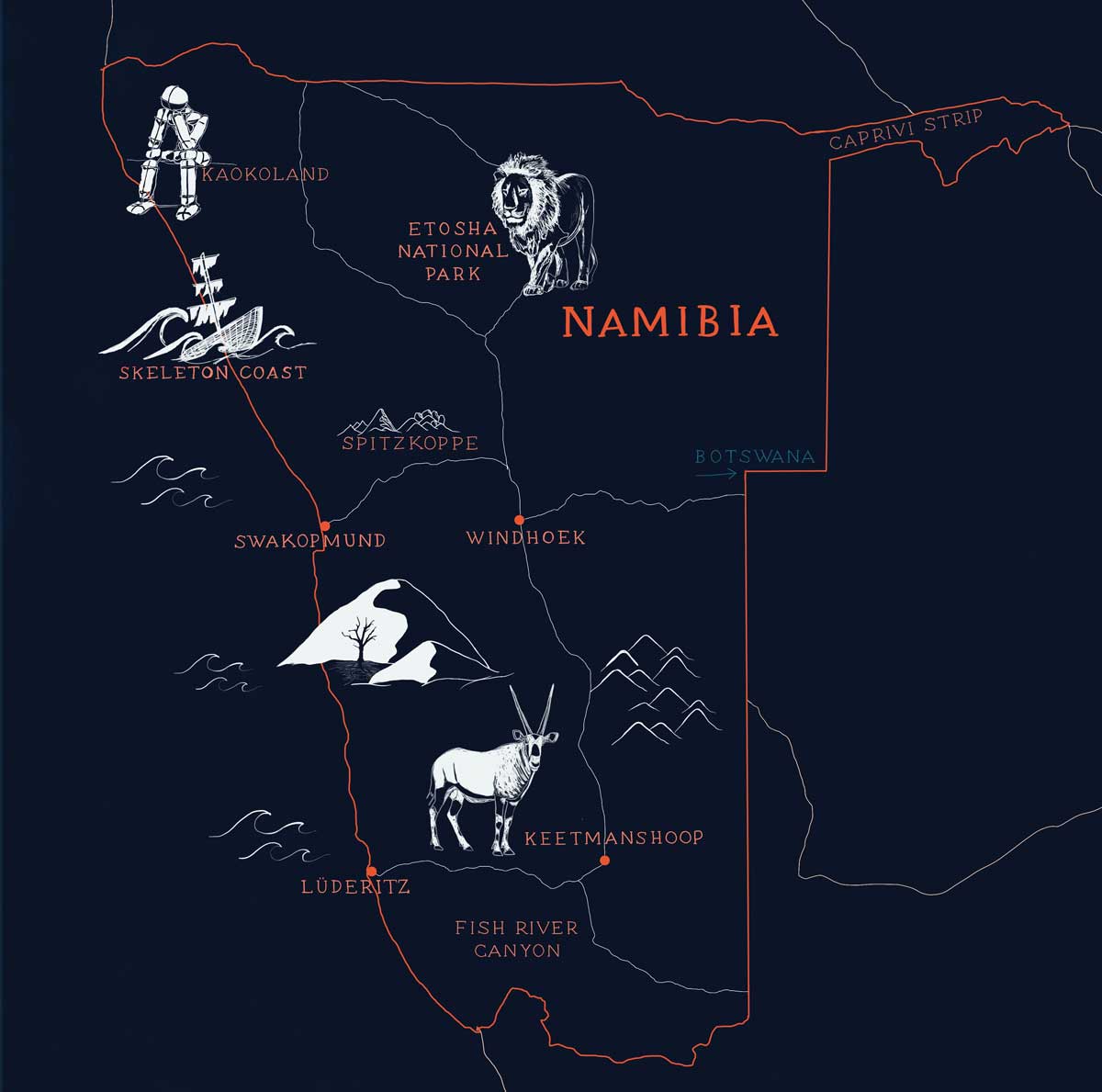
After stocking up, I decided to explore the southern chunk of the country first. This area is often featured in National Geographic or on BBC nature documentaries. As I found out, this was for good reason. As you turn off the main road, the modern 21st century scenery quickly dissolves away, and the hustle and bustle of city life fades in an instant. In front of you are 1,000 miles of desert, mountains, salt pans and pretty much everything else that an adventure rider dreams about. The tarmac disappears, the sun beats down, and you’re soon melting in your motorcycle jacket.
The scenery undergoes a tremendous change. It’s as if the place has been carefully drawn by an artist with an imagination that’s a little too wild to make it real. Over the course of the ride south, you are bombarded with a whole range of geography including vast desert plains, scenic mountain passes through chocolate hills, large rock formations, a thousand hill valleys, dried-up riverbeds, and national parks with wild roaming oryx. Then, you are treated to the sight of the second largest canyon on the globe.
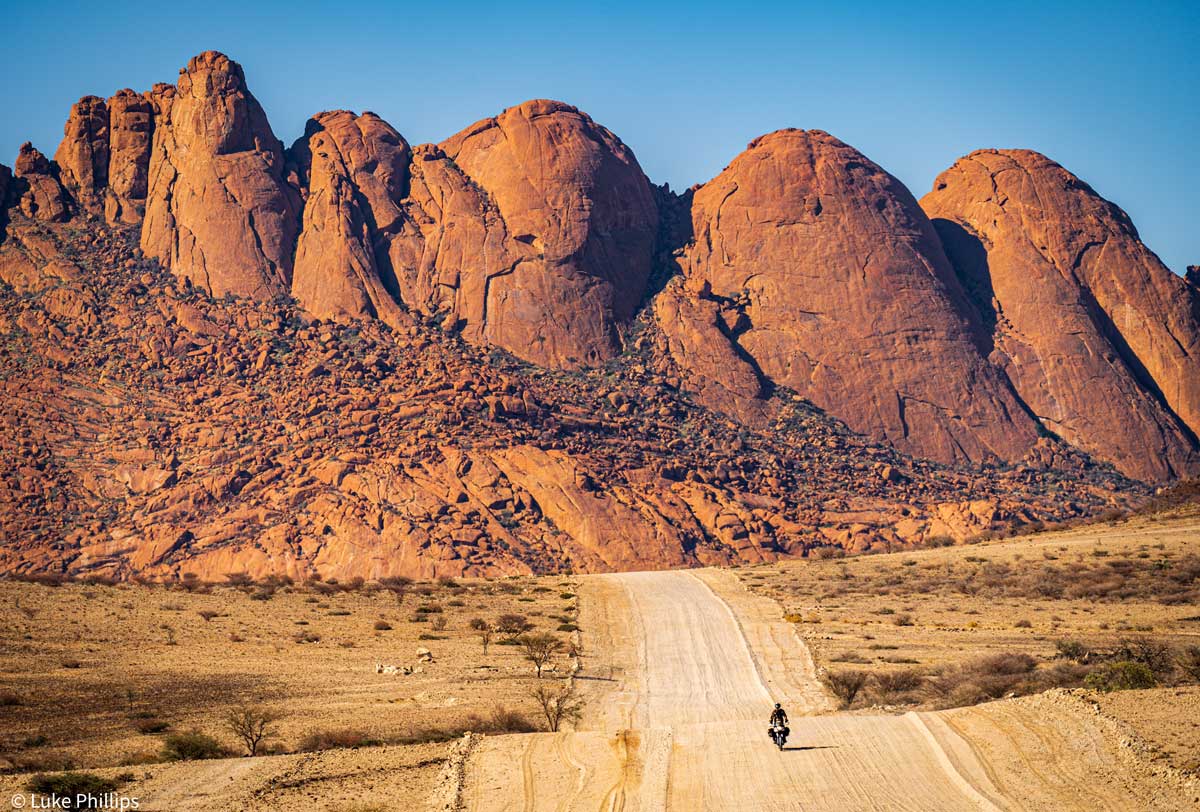 The lonely gravel road into the Namib Desert -Spitzkoppe Mountain Range.
The lonely gravel road into the Namib Desert -Spitzkoppe Mountain Range.
The entire region seems endless. Occasionally, through the infinite mixture of gravel and sand tracks, you see a roadhouse or a miniscule town with a few rusty derelict vehicles, a desert windmill, and a gas station, enabling you to fill up on petrol and supplies for the journey ahead. Even these small communities add to the experience; each looks straight from an old Western movie, complete with interestingly apt names such as the town of Solitaire or the Canyon Roadhouse. They are masterfully decorated with the colorful stickers of every traveler and biker to have passed through the area. It is an incredible place, but also a relentless one. The medley of gravel and sand roads, whilst initially pleasant and exciting, begins to wear you down with help from the extortionate summer heat to, forcing you to make camp and take shelter early in the day. All the more reason to relax, open a beer and enjoy the simple life of motorcycle camping. It truly is an adventure on its own, and once you finally reach the main road that marks the southern exit of the desert, you’re hit by conflicted feelings. The small happiness you feel knowing you can sit down and relax on your seat is immediately diminished by the vast sadness of being away from that visual masterpiece.
After you head back north and restock supplies in the city of Windhoek, the coastal section of the country steps in to grab the reins of the adventure and firmly takes the spotlight. As if Namibia hadn’t already given you enough reason to max out your camera’s SD cards, you are greeted with the Namib Desert and the Skeleton Coast. Local bushmen call this vast, beautiful landscape “The Land God Made in Anger.” Portuguese sailors called it “The Gates of Hell.” Whale bones littered this windswept coast in the past, but now it’s home to the remnants of ships that veered too close to shore―and the rare desert lion, if you are unlucky enough to bump into one on the passage through.
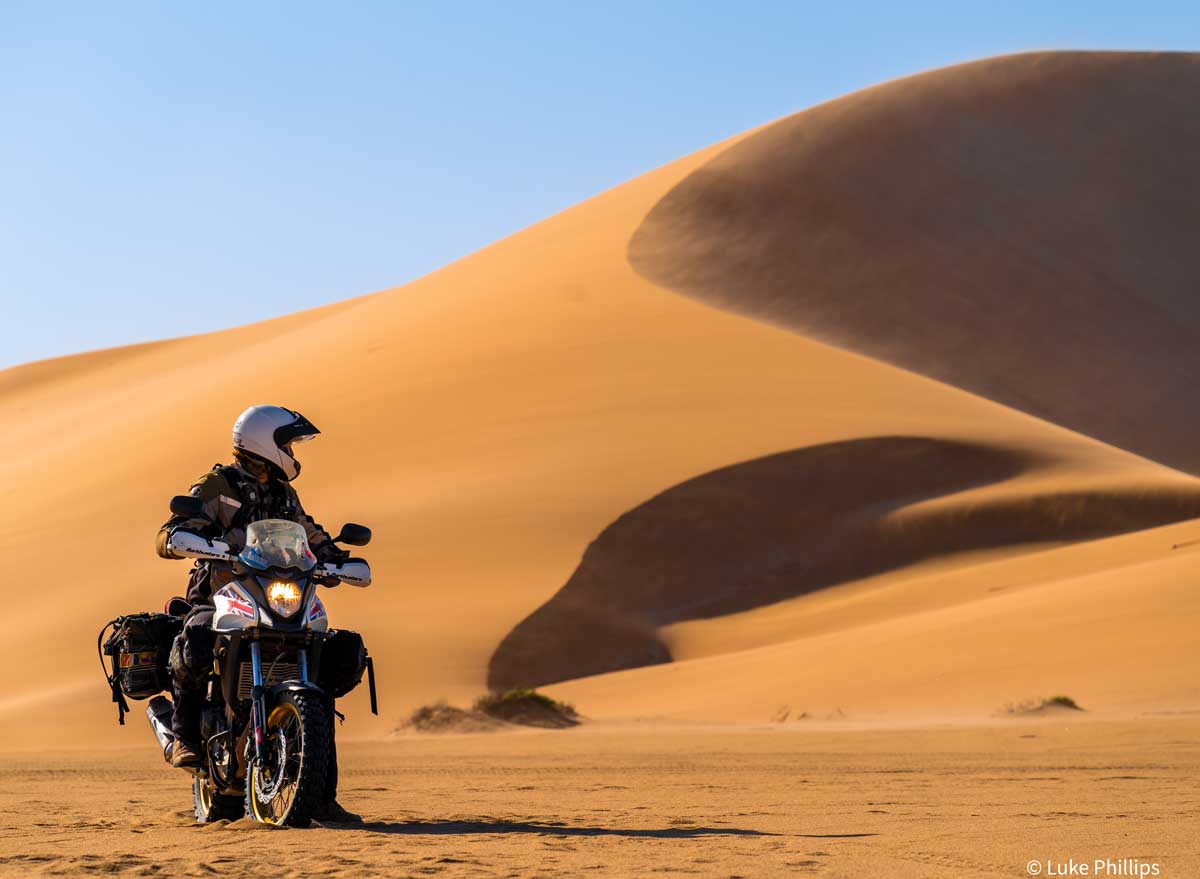 View over one of the beautiful sand dunes surrounding Swakopmund, just several miles from the Skeleton Coast.
View over one of the beautiful sand dunes surrounding Swakopmund, just several miles from the Skeleton Coast.
This is a popular sightseeing attraction for tourists and a wonderful backdrop for some beautiful off-road riding. The Namib Desert meets the coast head-on, towering above the ocean with sand dunes that would look more in place in a children’s cartoon than a real-life landscape. Motorcycles aren’t allowed in most Namibian national parks, but even the scenery outside of the boundaries is as spectacular as anything I have ever come across, and the gravel roads and sand trails dissect through the most beautiful of each of these natural monuments. Once again, one of Namibia’s well-kept cities provides a welcome break and pitstop from this haven. Stop in Swakopmund, and you can resupply and clean off the mud, sand, and salt before heading north into the journey’s final stage, into one of Africa’s last great wilderness destinations: Kaokoland.
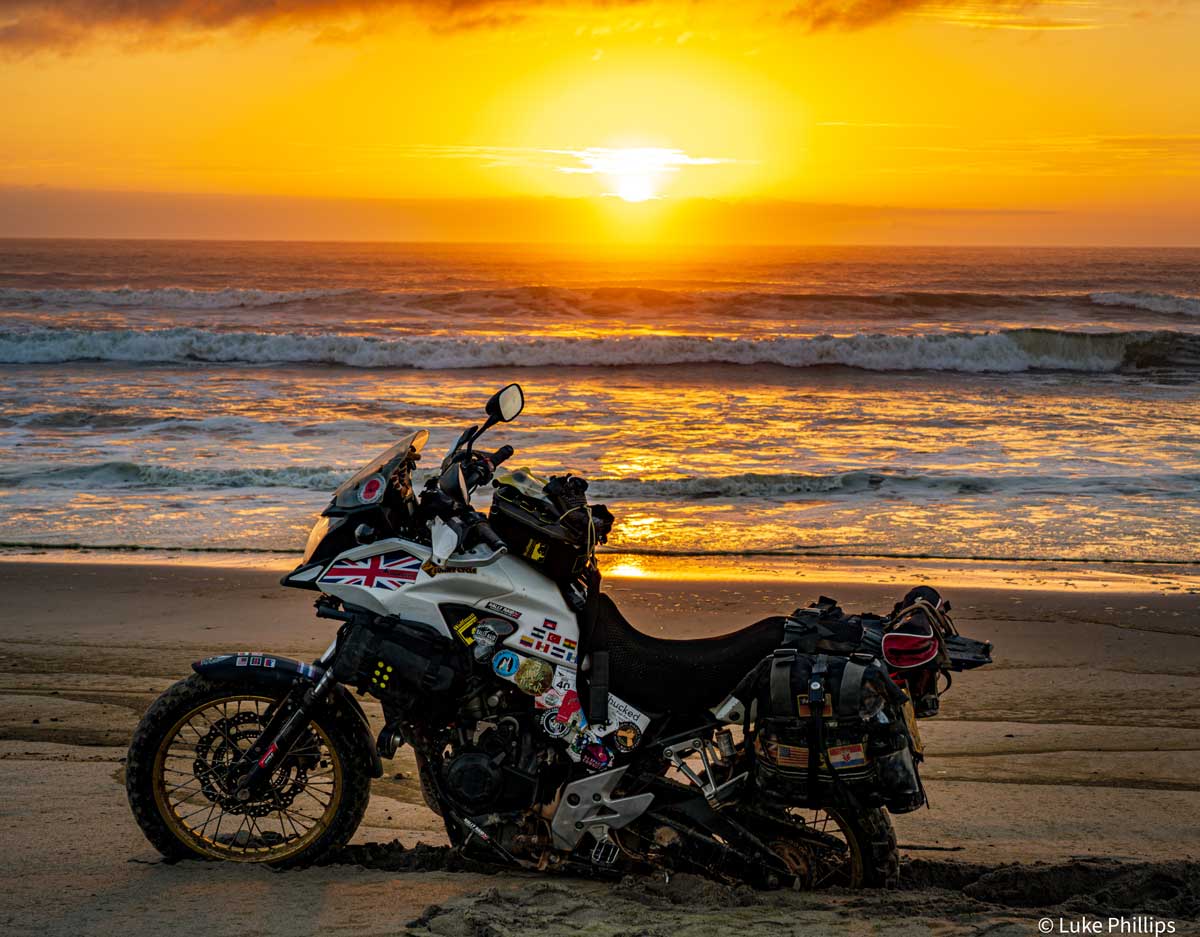 Herbert, my two-wheeled freedom machine, reminding me that the Skeleton Coast is not a forgiving place to ride.
Herbert, my two-wheeled freedom machine, reminding me that the Skeleton Coast is not a forgiving place to ride.
The tracks north of Swakopmund take you through the Skeleton Coast National Park (where bikes are allowed to transit) and up into the northwest of Namibia. If the south and the coast of the country haven’t scratched your itch for adventure by now, this place really strives to go one step further. As you ride past the main road, the terrain becomes brutal all over again as the packed gravel and soft sand of the coastal roads make way for rocks and corrugations. I had plenty of photo opportunities, but several flat tires and a broken clutch cable served as massive inconveniences, reminding me this was not a place I wanted to be stranded. Keeping true with the north’s reputation as a wilderness location, the infrequent roadhouses and gas stations from the southern route are replaced with small local villages selling gasoline out of jerrycans and Coca-Cola bottles. Once again, you’re greeted with an ever-changing medley of scenery, from desert plains, red rock mountains and then finally the slowly emerging greenery that straddles the legendary mountain passes and the famous Etosha salt plains of the north.
 Heading off into the wilderness of the Kaokoland.
Heading off into the wilderness of the Kaokoland.
A vast feeling of isolation complements this spectacle. It feels like the marvelous stone statues of the Kaokoland Lone Men are the only other living souls in this landscape. These can become a mysterious treasure hunt in the desert; the figures are masterfully hidden amongst the most desolate and interesting landscapes, their locations known only to those willing to search in the wilderness.
It’s something quite remarkable that so much scenery can be squeezed into a single country, and yet with all the wildness, and all the adventures to be had, you can still end the week with a cold Namibian beer in a 19th century German bier haus.
By the time my visa had expired, and I had to move on, I finally understood why everyone had urged me to rush to this magnificent country. The diversity of Namibia ensures that a short stay could give you a taste of the country’s wonders, but you could easily spend a lifetime here and still want more. It truly is a paradise for motorcycling. You get beautiful scenery, incredible infrastructure, fantastic culture, and a variety in off-road riding so diverse that you find yourself thinking it must have been crafted deliberately. But, as in any great motorcycling adventure, this all comes in a rough and unforgiving package, one that constantly reminds you why you carry spares in your panniers and why you thumbed through that beaten-up Haynes manual for your motorcycle before setting off. As the Grand Tour so aptly stated after visiting this place, “Namibia, it is one beautiful bastard of a country!”
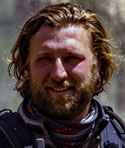 Luke Phillips is a long-time adventure rider and ex-British army paratrooper from Stourbridge, England. In 2017 he quit his job, sold all his possessions, and has never looked back. He’s ridden his Rally Raid CB500x all over the world, with 150,000 km, six continents, and 47 countries ridden. Luke is currently riding through Africa, and you can join his journey on Instagram at @LukePhill17
Luke Phillips is a long-time adventure rider and ex-British army paratrooper from Stourbridge, England. In 2017 he quit his job, sold all his possessions, and has never looked back. He’s ridden his Rally Raid CB500x all over the world, with 150,000 km, six continents, and 47 countries ridden. Luke is currently riding through Africa, and you can join his journey on Instagram at @LukePhill17


